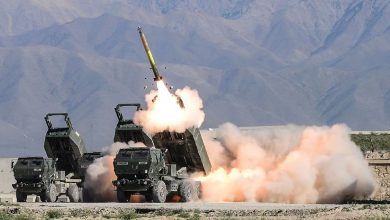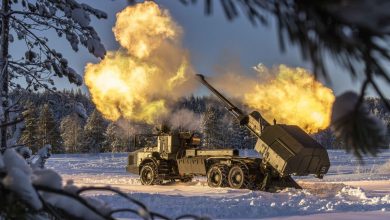Starmer in Ankara as Türkiye to reportedly get first Eurofighters

The pending sale of dozens of Eurofighter Typhoon jets to Türkiye is expected to dominate talks when British Prime Minister Keir Starmer meets President Recep Tayyip Erdoğan in Ankara.
The visit, Starmer’s first to Türkiye since taking office last year, comes as the NATO allies deepen defense cooperation, and as Ankara seeks to leverage the advanced jets to bolster its air power.
Starmer was welcomed by Turkish Defense Minister Yaşar Güler. But unlike other leaders, Starmer’s plane landed at a military base in Ankara. He is accompanied by U.K. Defense Secretary John Healey and Air Chief Marshal Harv Smyth.
A Turkish official, speaking on condition of anonymity, told Agence France-Presse discussions were ongoing but said Britain would hand over several jets on Monday without saying how many.
Analysts said it would likely be two.
British officials have not said whether there would be an agreement or any formal handover during the visit.
Ankara has reportedly proposed to its European allies and the U.S. ways it could swiftly procure advanced fighter jets, amid talks to buy 40 Eurofighter Typhoons as well as U.S. F-16s and F-35s.
Under a deal it is nearing with Britain, Türkiye would promptly receive 12 of Typhoons, albeit used, from previous buyers Qatar and Oman to meet its immediate needs, with 28 new jets coming in future years, a report by Reuters said.
In July, Ankara and London signed a preliminary purchase deal approved by Eurofighter consortium members Britain, Germany, Italy and Spain, represented by Airbus, BAE Systems and Leonardo.
Germany initially blocked the sale, but lifted its opposition in July, clearing the way for the sale to go ahead.
Chancellor Friedrich Merz visits Ankara on Thursday for talks with Erdoğan.
Last week, Erdoğan visited Qatar and Oman in part to discuss the purchase plan, which the president said was moving in “positive direction.”
Qatar’s Emir Sheikh Tamim bin Hamad Al Thani is due to visit Ankara on Tuesday for talks to clarify outstanding issues, the Turkish official said.
Qatar had placed an order for 24 Eurofighters in 2017 with the last two due to be delivered by the year’s end, observers said.
The jets Britain was to sign over to Türkiye on Monday were likely to be those that had been destined for Qatar, Aaron Stein, president of the Foreign Policy Research Institute.
Instead of being sent to Doha, “they’ll simply be shipped to Türkiye,” Stein told AFP.
Gaza’s future is also likely to feature in talks between Erdoğan and Starmer, with Türkiye keen to join an international stabilization force.
Source: Daily Sabah





